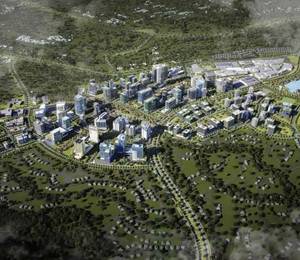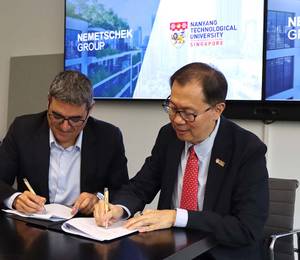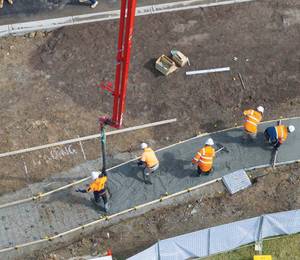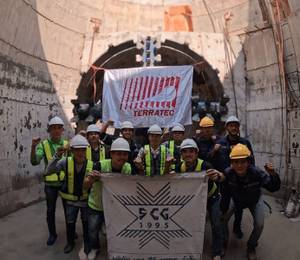The global engineering, procurement, consulting and construction company, Black & Veatch, has been involved in the design, development and implementation of more than 56 GW of wind energy projects and has reviewed wind resources of sites throughout the world. The company’s experience spans from less than 1 MW to large farms of more than 1,000 MW.
With onshore wind projects continuing to gain momentum worldwide, Black & Veatch’s Sam Scupham talks to Southeast Asia Construction (SEAC) about the state of the industry in Asia, upcoming global trends, and new construction innovations that help advance the industry.
The rise of onshore wind farms in Asia
According to the International Renewable Energy Agency (IRENA) renewable energy statistics 2021, several countries in Asia have increased their onshore wind capacity between 2019 and 2020. More recently, Laos announced its first onshore wind project.
IRENA reported that despite pandemic restrictions, wind expansion in Asia almost doubled in 2020 compared to 2019. China is the leader of the pack with 72 GW of new wind capacity.
Vietnam is another promising market for onshore wind energy, said Sam Scupham, associate vice president, global renewable and distributed energy-power Asia at Black & Veatch. Black & Veatch is currently the owner’s engineer for the Ia Pech 1 and Ia Pech 2 wind farms (each with a capacity of 49.5 MW), located in the Ia Grai district of Gia Lai province. The company is responsible for project management, project control, design review, quality assurance, construction monitoring and commissioning support.
Earlier in May, the Asian Development Bank (ADB) announced its support for three new 48-MW wind farms in Vietnam’s Quang Tri province. This 144-MW project is expected to increase the country’s wind power capacity by 30%, helping to meet its growing demand for energy.
“Another Asian economy that has good wind potential is the Philippines,” added Mr Scupham. “With the Philippines allowing 100% foreign ownership for large-scale geothermal developments, we anticipate rapid renewable energy market growth in the country.”
Among the latest projects in the Philippines is the Aklan wind farm with a total capacity of 75.6 MW, located in Aklan province. This project is part of a large-scale grid reinforcement and expansion for the islands of Cebu, Negros and Panay, called CNP Backbone Extension.
“We believe the future of Asia’s onshore wind projects will be minimally impacted by the pandemic in the long term. The investment appetite for Asia’s renewable energy market is growing and we believe wind energy will accelerate the decarbonisation of Asia’s electricity sector,” explained Mr Scupham, who is now based in Bangkok, Thailand.
“In the mid-term, some renewable energy projects in the region have been postponed due to pandemic uncertainties and supply chain impacts with respect to commodity prices and fabrication of equipment. However, we see many of our clients taking the opportunity to advance pre-development activities including project planning, designing and permitting for projects that have been confirmed.
“In the face of rapidly evolving pandemic challenges, meticulous planning of resources and logistics will be critical to renewable energy project success.”
Global trends
Mr Scupham noted that a growth driver of onshore wind capacity is the reduced cost of electricity generation from onshore projects, compared to offshore projects. “The infrastructure for transmitting electricity from onshore turbines is less expensive than the infrastructure required for transmitting electricity from offshore turbines.”
“One of the key trends we are seeing is an interest in hybrid power generation systems, which integrate renewable electricity generation with energy storage as a grid asset,” said Mr Scupham. “This pairing helps to address the variability of renewable energy generation.
“Another key trend is the deployment of higher hub heights and larger rotor diameters to increase generation capacities. Today, rotor diameters of 170 m are available. To accommodate the increased capacities from renewable energy generation, integrated power solutions, including robust transmission and distribution systems, will be required.”
With multiple moving parts in an energy transition, Mr Scupham pointed out that grid management complexities will increase. “From that aspect, digitalisation can be expected to play a key role in optimising power load and supply opportunities to enhance grid reliability.”
‘Prefab can be extensively applied’
Construction methods and technologies to build onshore wind farms have also been developing over the years. “Prefab methods, such as prefabricated prefinished volumetric construction (PPVC), can be extensively applied in onshore wind installations,” explained Mr Scupham.
“A wind farm consists of a substation, a number of wind turbine generators (WTGs), transmission lines and collection circuits. The transmission lines and collection circuits have transmission towers, collection circuit towers and poles. The foundation components can be PPVC modules.”
“The benefits are significant,” he emphasised. “First, PPVC foundations can be produced indoor, so the work is not heavily subjected to weather conditions. This will save time and maintain quality, particularly during the monsoon seasons in Southeast Asia.
“Second, in projects where the transmission line’s foundations are located in remote areas with limited access, PPVC will help to minimise the access impact and simplify the construction process, since there is no need to carry out formwork casting, rebar installations and concrete placement on site. Our Ia Pech project in Vietnam uses precast foundations, a type of PPVC, for the collection circuits, including pad-mount medium voltage (MV) transformers, tower and poles.”
‘Drones offer many benefits’
Mr Scupham also mentioned that there are opportunities to use drone-based solutions for site maintenance and inspections of onshore wind projects for erosion and wear.
“The run-time for drones is improving and applications continue to expand rapidly. Beyond reducing cost, easier access and improved employee safety, the unmanned aerial system (UAS) featuring high-definition images or video offers many advantages: increased frequency of inspections with improved vantage points; ability to collect greater levels of data analysed to assess assets; improved system reliability and resiliency; reduced asset management costs; and lower the impact to the landowners.”
Black & Veatch’s project with the US energy company Ameren Corp. and Collins Aerospace has shown that drones can complete a non-stop flight of up to 60 miles (96 km), revealed Mr Scupham. The team proved that Beyond Visual Line of Sight (BVLOS) drone flights can inspect more miles of transmission lines faster and safer than ever envisioned.
“The flight demonstrated the maturing technology’s promise of more efficient monitoring of expansive utility assets, especially in remote rural stretches. This long-range achievement underscores the revolutionary potential of drones in ensuring a resilient power supply, using an eye in the sky and imaging data captured by the Light Detection and Ranging (LiDAR) laser-scanning system.”
He stressed that with wind installations naturally located in areas with strong wind, well-trained pilots will be required to control drones in such environments.
On the topic of digital twin, which is fast becoming a new game changer in engineering and construction, Mr Scupham shared his view. “The digital twin technology can provide the ability to visualise complex information in a simplified way. For instance, it can enable the operation and maintenance teams of onshore wind installations to collaborate using spatial 3D models to visualise performance data and maintenance records for assets.
“This technology benefits asset-intensive industries like utilities. It is essentially an integrated digital representation of physical assets which provides historical, current and predictive analysis in near real-time. What separates digital twin from traditional models is that the twin is in constant dialogue with its physical counterpart through combining information technology (IT) and operations technology (OT), enabling the users to simulate scenarios before actioning them in the real world.”
The potential of autonomous machines
“Innovations in construction automation and digitalisation are very exciting for Black & Veatch,” continued Mr Scupham, speaking further on advanced technologies for onshore wind construction. “We are early adopters of construction technologies that improve safety, efficiency and effectiveness in project operation and execution. We have been investing in these areas to help our clients meet project scheduling and budget targets.
“One example is Built Robotics, which develops a system that enables the upgrading of existing heavy equipment to be fully autonomous. Such equipment would be able to work on job sites without operators inside the cab, and even without operators remote controlling the equipment. Built Robotics has autonomous excavators and bulldozers that have been involved in foundation excavation, trenching and grading.”
Black & Veatch has started using autonomous excavators to dig trenches for buried infrastructure. The company deployed Built Robotics’ autonomous excavator on a solar project and is continuing to use the machine for trenching on utility-scale solar projects. “We see the opportunity to extend these construction technologies to the wind industry,” said Mr Scupham.
“We are optimistic that such advanced technologies will help to reduce costs and optimise construction schedule, while improving safety standards. Ultimately, all these benefits will help us drive greater value for our clients.”
Image credits:
Photos 1-3: Black & Veatch
Photo 4: Built Robotics














